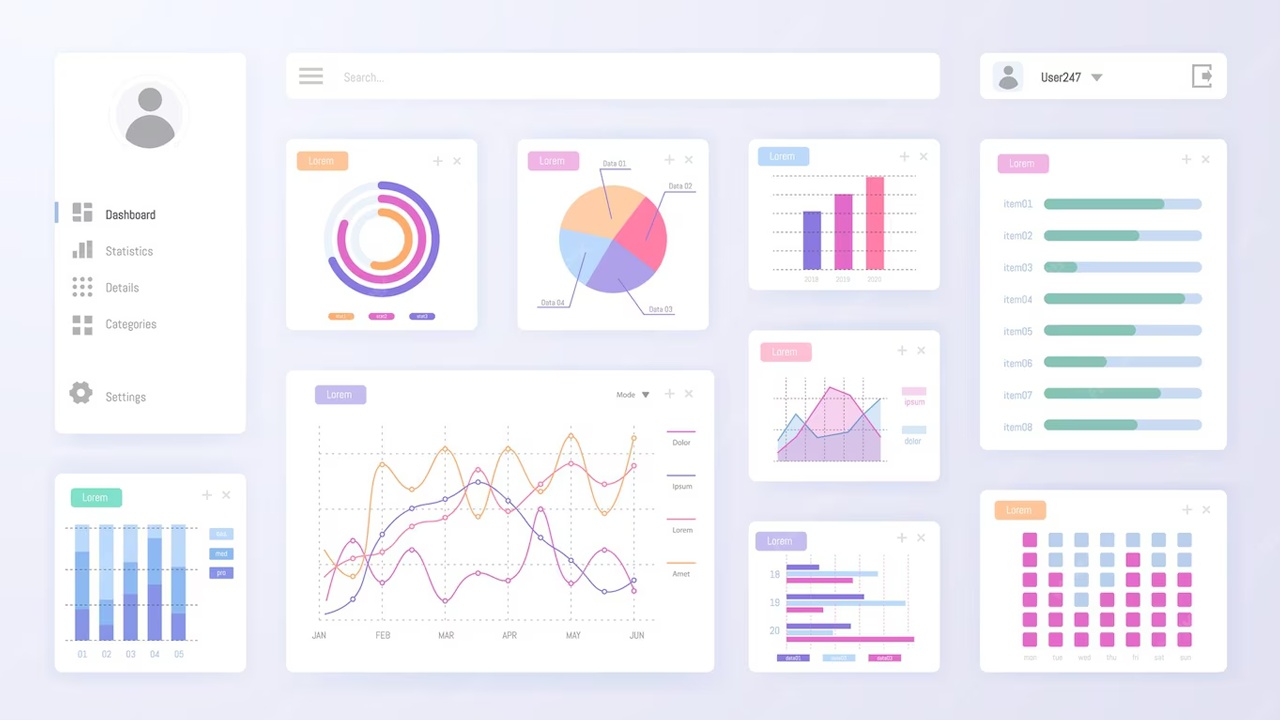
In the competitive world of affiliate marketing, the difference between successful affiliate marketers and those who struggle often comes down to one crucial element: their sales funnel. While many beginners make the mistake of sending cold traffic directly to affiliate links, seasoned professionals understand that an effective affiliate marketing funnel is the foundation of sustainable affiliate marketing success.
A sales funnel in affiliate marketing is a strategic system that guides potential customers from initial awareness to purchase through affiliate-promoted products. Unlike a traditional sales funnel, which is typically used by businesses to sell their own products and follows stages such as awareness, interest, desire, and action, an affiliate sales funnel is designed to maximize reach and engagement by nurturing desire, building relationships, and optimizing the entire customer journey for higher conversions and loyalty—all while building trust and providing value to your target audience.
The importance of sales funnels for affiliate marketers cannot be overstated. According to industry data, the affiliate marketing industry reached $17 billion in 2023, with successful affiliates using structured funnels achieving conversion rates 30-60% higher than those who rely on direct linking. By building an effective affiliate sales funnel, marketers can systematically convert cold traffic into paying customers and unlock the potential to earn money online.
Introduction to the Affiliate World
The affiliate model is a powerful online business model that allows affiliate marketers to earn passive income by promoting affiliate products or services to a targeted audience. At its core, this form of marketing involves partnering with companies to recommend their products, earning a commission for each sale or action generated through your unique affiliate link. This approach enables individuals to build a flexible, scalable business without the need to create or manage their own products.
A successful affiliate marketing campaign relies on more than just sharing links — it requires a well-structured affiliate marketing sales funnel that guides potential customers through every stage of the buyer’s journey. From the moment a prospect becomes aware of a product to the point they make a purchase, the sales funnel ensures that each interaction is purposeful and value-driven. By understanding how to move potential customers through this process, affiliate marketers can maximize their conversion rates and generate consistent affiliate income.
The affiliate marketing sales funnel is essential for turning casual website visitors into loyal customers. It helps affiliate marketers nurture relationships, address customer needs, and strategically promote affiliate products in a way that feels natural and trustworthy. Whether you’re just starting out or looking to optimize your affiliate campaign, mastering the sales funnel is the key to unlocking long-term success and sustainable passive income.
What is a Sales Funnel for Affiliates?

An affiliate marketing sales funnel is a structured pathway that moves prospects through distinct stages: awareness, interest, consideration, decision, and action. This systematic approach allows affiliate marketers to guide potential customers through each stage of the customer's journey, building trust, addressing pain points, and ultimately leading to affiliate product purchases.
The core concept revolves around the AIDA model - Attention, Interest, Desire, and Action - which serves as the foundation of affiliate marketing funnels. In the awareness stage, you attract potential buyers through valuable content, search engine optimization, and targeted advertising. During the interest phase, you capture leads through compelling opt in forms and lead magnets. The desire stage involves nurturing leads through email marketing and educational content, while the action stage converts prospects into paying customers through strategic affiliate product recommendations. The funnel is specifically designed to convert leads into paying customers by guiding them through each step of the process.
An affiliate marketing funnel uses content marketing, lead magnets, and automated email sequences to guide potential customers toward affiliate product purchases. This might include creating informative blog posts that rank well in search engines, offering free resources like ebooks or webinars in exchange for email addresses, and implementing sophisticated email campaigns that provide value while introducing relevant affiliate products as solutions to specific problems.
What sets affiliate funnels apart from direct sales funnels is the affiliate’s role as a trusted intermediary rather than product owner. While traditional businesses own their products and control the entire customer experience, affiliate marketers must build relationships and establish credibility before recommending products they don’t directly sell. This requires a more nuanced approach to marketing efforts, focusing heavily on trust-building, transparency about affiliate relationships, and genuine value creation for prospective customers. Building trust and providing value are essential for converting leads, as they help move prospects from interest to action.
The most effective affiliate marketing funnel leverages multiple touchpoints to warm up cold traffic. Instead of immediately pushing for a sale, successful affiliates focus on understanding their audience demographics, addressing specific pain points, and positioning themselves as helpful resources. This approach not only improves conversion rates by converting leads but also builds strong customer relationships that encourage repeat purchases and long-term affiliate income.
Building Your Affiliate Marketing Sales Funnel
Creating an effective affiliate marketing funnel requires a systematic approach to each stage of the customer journey. The most successful sales funnels are built with a deep understanding of the target audience and a clear strategy for moving prospects from initial awareness to final purchase. Designing an effective affiliate funnel is crucial for maximizing conversions and ensuring long-term success.
To achieve the best results, consider building and optimizing your own funnel tailored to your specific audience and niche.
Step 1: Traffic Generation and Awareness

The foundation of any successful affiliate marketing funnel and campaign begins with attracting qualified prospects to your landing pages. This awareness stage focuses on reaching potential customers who have problems your affiliate products can solve.
Content marketing through SEO-optimized blog posts remains one of the most effective methods for generating organic traffic. By creating valuable content that addresses your audience’s pain points and ranks well in search engines, you can attract visitors who are actively searching for solutions. This organic traffic often converts better than other sources because these visitors are already in a problem-solving mindset.
Social media marketing across key social media platforms allows you to reach broader audiences and build brand visibility. A well-crafted social media post can make your target audience aware of your affiliate offers by initiating engagement and encouraging them to visit your landing page or offer. Whether through informative social media posts, engaging video content, or targeted social media ads, these platforms offer multiple ways to attract potential buyers. The key is understanding where your target audience spends time and creating content that resonates with their interests and challenges. Use social media analytics to track engagement, clicks, and conversions so you can optimize your campaigns and increase affiliate sales.
Paid advertising through Google Ads, social media ads, and other advertising platforms can quickly scale your traffic generation efforts. While this requires upfront investment, paid ads allow for precise targeting based on audience demographics, interests, and behaviors. The key to successful paid advertising is ensuring your advertising costs remain profitable relative to your affiliate income.
Influencer marketing has emerged as a powerful traffic source, particularly for affiliate marketers in specific niches. By partnering with influencers who already have trust with your target audience, you can leverage their credibility to drive qualified traffic to your funnel. This approach works especially well when the influencer genuinely uses and recommends the affiliate products you’re promoting.
Step 2: Lead Capture and Relationship Building
Once you’ve attracted visitors to your landing page, the next crucial step is capturing their contact information so you can nurture the relationship over time. At this stage, it is vital to identify and engage the potential customer, as focusing on these individuals early in the marketing funnel increases your chances of conversion and helps build lasting relationships. This stage transforms anonymous visitors into identifiable leads you can follow up with through email campaigns and other marketing efforts.
Creating compelling opt-in forms with valuable lead magnets is essential for maximizing your conversion rate. Your lead magnet should provide immediate value while positioning you as an authority in your niche. Popular lead magnets include comprehensive guides, exclusive webinars, useful checklists, or access to private communities. The key is ensuring your lead magnet directly relates to the affiliate products you’ll eventually promote.
Your landing pages must clearly communicate the value proposition and include social proof to build credibility. Customer testimonials, case studies, and evidence of your expertise help convince visitors to share their email addresses. The design should be clean, mobile-friendly, and focused on a single conversion goal without distracting elements.
Building relationships starts immediately with a well-crafted welcome email sequence. This initial series of emails should deliver on your lead magnet promise while beginning to establish your authority and personality. Many successful affiliate marketers use this opportunity to share their story, explain their mission, and begin building the trust necessary for future affiliate sales.
Segmentation plays a crucial role in effective relationship building. By tagging subscribers based on their interests, behaviors, or demographics, you can deliver more personalized content that resonates with specific groups. This targeted approach significantly improves engagement rates and conversion potential.
Step 3: Email Nurturing and Trust Development
The nurturing phase is where most affiliate success is built. This stage involves implementing automated email sequences that provide consistent value, address common objections, and gradually introduce affiliate products as natural solutions to subscribers’ problems.
Successful email marketing requires a careful balance between providing value and promoting products. The most effective approach follows a value-heavy content strategy where you share useful tips, insights, case studies, and educational content that helps subscribers achieve their goals. This value-first approach builds trust and positions you as a helpful resource rather than just another salesperson.
Addressing pain points through your email content creates natural opportunities to introduce affiliate products. When you thoroughly understand your audience’s challenges, you can craft emails that discuss these problems and present your affiliate products as logical solutions. By increasing trust and relevance through these strategies, you can boost conversions, leading to higher conversion rates and better customer relationships.
Building authority through valuable insights, industry updates, and personal experiences helps establish your credibility. Sharing behind-the-scenes content, lessons learned, and honest reviews (both positive and negative aspects of products) demonstrates transparency and builds trust. This authenticity is crucial for long-term affiliate success.
Social proof integration throughout your email sequences reinforces your recommendations. Including customer testimonials, success stories, and social media mentions provides evidence that others have benefited from your recommendations. This third-party validation often provides the final push needed to convert hesitant prospects.
Step 4: Conversion and Affiliate Sales

The conversion stage is where your nurturing efforts pay off through affiliate sales. This phase requires strategic presentation of affiliate offers through persuasive sales pages, detailed product reviews, and compelling calls-to-action that guide prospects to purchase.
Creating effective sales content involves more than just product features. The best converting content focuses on benefits, transformation, and outcomes that matter to your audience. Whether you’re writing a detailed product review or creating a dedicated sales page, emphasize how the affiliate product will improve your customer’s life or solve their specific problems.
Strategic placement of affiliate links throughout your content maximizes conversion opportunities without appearing overly promotional. This might include contextual links within educational content, dedicated product recommendation emails, or comparison articles that help prospects make informed decisions. The key is making your affiliate link placement feel natural and helpful.
Urgency and scarcity elements can significantly boost conversion rates when used ethically. Limited-time bonuses, exclusive deals, or genuine scarcity (like limited enrollment periods) create motivation for immediate action. However, these tactics must be authentic to maintain trust and avoid damaging your reputation.
Follow-up sequences for non-buyers help capture conversions from prospects who need more time or information. These might include additional case studies, frequently asked questions, or alternative product recommendations. Addressing objections during the sales process is crucial at this stage, as it helps resolve concerns and facilitates conversions. Sometimes prospects need multiple touchpoints before they’re ready to purchase, and consistent follow-up ensures you’re top-of-mind when they’re ready to buy.
Leveraging Technology and Automation in Your Funnel

In today’s digital landscape, technology and automation are indispensable tools for building an effective affiliate marketing funnel. By integrating automation into your marketing efforts, you can streamline repetitive tasks, reach a broader audience, and significantly boost your conversion rates.
Email marketing automation allows affiliate marketers to deliver personalized messages and nurture leads at scale. Automated email sequences can welcome new subscribers, provide valuable educational content, and introduce affiliate products at the right moments in the customer journey. This ensures that every lead receives timely, relevant information that moves them closer to making a purchase.
Social media scheduling tools enable you to maintain a consistent presence across key platforms, sharing valuable content and engaging with your audience without having to post manually every day. By planning and automating your social media posts, you can increase brand visibility and drive more traffic to your landing pages.
Landing page builders make it easy to create high-converting pages tailored to your target audience. These tools often include templates optimized for lead capture and conversion, allowing you to quickly test and refine your approach for maximum effectiveness.
Affiliate networks and tracking software are also vital components of a successful affiliate marketing funnel. These platforms help you monitor your performance, track conversions, and analyze which marketing efforts are delivering the best results. With access to real-time data, affiliate marketers can make informed decisions, optimize their campaigns, and continually improve their results.
By leveraging technology and automation, you can create a marketing funnel that not only saves time but also delivers a more personalized and effective experience for your audience — ultimately leading to higher conversion rates and greater affiliate income.
Measuring and Evaluating Funnel Performance

To achieve lasting affiliate marketing success, it’s essential to regularly measure and evaluate the performance of your affiliate marketing funnel. Tracking key metrics provides valuable insights into how well your sales funnel is converting prospects into customers and where there may be opportunities for improvement.
Conversion rates are one of the most important indicators of an effective sales funnel. By monitoring the percentage of visitors who take desired actions—such as signing up for your email list or making a purchase — you can gauge the effectiveness of each stage in your funnel. Click-through rates and Earnings Per Click (EPC) further reveal how well your content and affiliate offers are resonating with your audience.
Affiliate marketers can use analytics tools to track these key metrics and gain a deeper understanding of their marketing funnel’s performance. These tools allow you to identify bottlenecks, test different strategies, and optimize your affiliate marketing campaign for better results. For example, if you notice a drop-off at the lead capture stage, you might experiment with new landing page designs or more compelling lead magnets.
Regularly evaluating your funnel’s performance ensures that your marketing efforts remain aligned with your goals. By making data-driven decisions and continuously refining your approach, you can create a more effective sales funnel that drives higher conversion rates and increases your affiliate income over time.
Post-Purchase Customer Journey in Affiliate Marketing

Your relationship with customers doesn’t end when they click your affiliate link and make a purchase. The post-purchase phase represents a crucial opportunity to deepen relationships, provide additional value, and create long-term advocates for your brand. As an affiliate marketer, your ongoing support and engagement with customers after the sale can significantly enhance their experience and foster loyalty.
The Satisfied Customer Experience
After purchasing through an affiliate link, customers typically receive order confirmation from the vendor while you receive commission notification from your affiliate program. During this transition, successful affiliate marketers ensure customers feel supported throughout the entire process, even though they don’t control the fulfillment or customer service aspects.
Creating a seamless bridge between your marketing and the vendor’s onboarding process helps maintain the positive relationship you’ve built. This might involve sending a congratulatory email that reinforces their smart purchase decision, providing additional resources that complement their new product, or offering your personal support for any questions they might have.
Many effective affiliate marketing funnels include post-purchase welcome sequences that continue providing value while the customer is most engaged. These emails might include tutorials for maximizing their new product’s value, complementary resources, or access to exclusive communities where they can connect with other customers.
Monitoring customer satisfaction through the vendor’s systems (when possible) or through direct communication helps you identify potential issues early. Happy customers are more likely to purchase additional recommendations, while addressing problems quickly can turn potential negative experiences into demonstrations of your commitment to customer success.
Continued Nurturing and Segmentation

Successful affiliate marketers understand that a single purchase is just the beginning of a potentially valuable long-term relationship. Customers who trust you enough to purchase once are significantly more likely to buy additional recommendations, making them among your most valuable subscribers.
Customer segmentation based on purchase behavior allows for highly targeted follow-up campaigns. Customers who purchase higher-ticket items might be interested in premium offers, while those who buy specific types of products can be targeted with related solutions. This behavioral data creates opportunities for personalized marketing that feels relevant rather than random.
Providing ongoing value through exclusive content, early access to new recommendations, or special bonuses helps maintain engagement and reinforces your position as a trusted advisor. Many successful affiliates create VIP email lists or private communities exclusively for customers, fostering loyalty and encouraging repeat purchases.
Cross-selling and upselling opportunities naturally emerge when you maintain relationships with existing customers. If someone purchases a productivity tool through your recommendation, they might later be interested in related products like project management software, time-tracking tools, or business education courses. The key is timing these recommendations appropriately and ensuring they genuinely add value.
Building Long-Term Loyalty

Creating loyal customers who actively look forward to your recommendations requires consistent value delivery and genuine care for their success. This goes beyond just promoting products to becoming a trusted advisor who helps customers achieve their goals.
Encouraging feedback and reviews helps you understand what’s working and what could be improved in your recommendations. Customers who take time to provide feedback are often your most engaged subscribers, and their insights can help you refine your approach for future prospects.
Building relationships beyond transactions involves sharing personal insights, celebrating customer successes, and creating genuine connections. When customers see you as a real person who cares about their outcomes rather than just commission earnings, they become more loyal and more likely to recommend you to others.
Creating systems to encourage repeat purchases might include loyalty programs, exclusive access to new products, or special bonuses for repeat customers. The goal is making customers feel valued and appreciated for their continued trust in your recommendations.
Long-term relationship building often leads to the most valuable outcome in affiliate marketing: word-of-mouth referrals. Satisfied customers who trust your recommendations often share your content with friends, family, and colleagues, creating organic growth that compounds your marketing efforts over time.
Creating a Sustainable Affiliate Revenue Stream

Building a sustainable affiliate revenue stream goes beyond chasing quick wins — it’s about fostering long-term relationships and delivering consistent value to your target audience. The most successful affiliate marketers focus on creating a loyal customer base that trusts their recommendations and returns for repeat purchases.
To achieve this, prioritize providing valuable content that educates, informs, and solves real problems for your audience. Whether through in-depth blog posts, engaging social media marketing, or targeted email marketing campaigns, your goal should be to position yourself as a trusted resource in your niche.
Strong customer relationships are the foundation of repeat purchases and ongoing affiliate marketing success. By nurturing leads with personalized content and timely follow-ups, you can stay top of mind and encourage customers to explore additional affiliate products that meet their evolving needs.
Content marketing plays a crucial role in this process, helping you attract new prospects while reinforcing your expertise and credibility. Combine this with strategic email marketing and social media marketing to maintain regular communication and promote high-quality affiliate products that genuinely benefit your audience.
Ultimately, a customer-centric approach that emphasizes value, trust, and ongoing engagement will help you establish a reliable affiliate income stream. By focusing on sustainable growth and encouraging repeat purchases, you can build a thriving affiliate marketing business that delivers lasting results for both you and your customers.
Conclusion

Effective affiliate marketing sales funnels transform one-time visitors into loyal customers through strategic nurturing and consistent value delivery. Unlike simple affiliate link placement, a well-designed affiliate marketing funnel creates a systematic approach to building trust, addressing customer needs, and guiding prospects through a logical progression toward purchase decisions. Affiliate marketing funnels are a key component of online marketing strategies, which require staying current with trends, refining approaches, and leveraging dynamic tools to drive growth and success in the digital space.
The key success factors for any successful affiliate marketing funnel include understanding your audience deeply, providing genuine value at every touchpoint, building authentic trust through transparency, and maintaining clear disclosure about affiliate relationships. These elements work together to create an environment where prospects feel comfortable making purchase decisions because they trust your expertise and recommendations.
The primary benefits of implementing a structured affiliate funnel extend far beyond immediate commission earnings. Higher conversion rates result from warming up cold traffic through valuable content and relationship building. Better audience targeting emerges from understanding subscriber behavior and preferences over time. Improved customer relationships create opportunities for repeat sales and word-of-mouth referrals. Most importantly, a systematic approach to affiliate marketing creates sustainable passive income that can grow consistently over time.
Success in affiliate marketing requires patience, persistence, and a genuine commitment to helping your audience solve their problems. The most effective sales funnels feel helpful rather than pushy, educational rather than purely promotional, and valuable regardless of whether prospects make immediate purchases.
Ready to start building your own affiliate funnel? Begin by identifying your target audience’s biggest challenges, create valuable content that addresses these pain points, and develop lead magnets that demonstrate your expertise. Focus on building genuine relationships with your subscribers, and the affiliate sales will naturally follow as a result of the trust and value you provide.
Remember that the best affiliate marketing funnel is one that serves your audience’s needs while building a sustainable business for yourself. Start with these fundamentals, test and optimize continuously, and watch as your systematic approach transforms both your conversion rates and your long-term affiliate marketing success.


